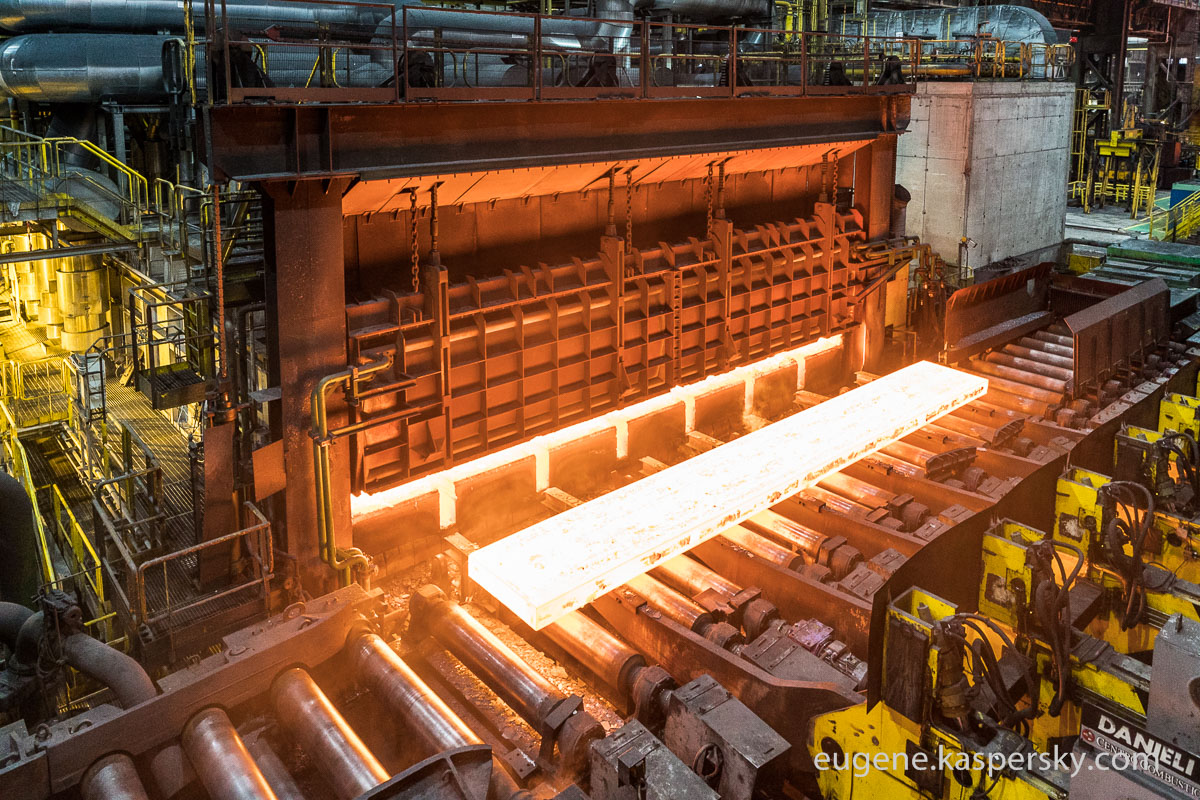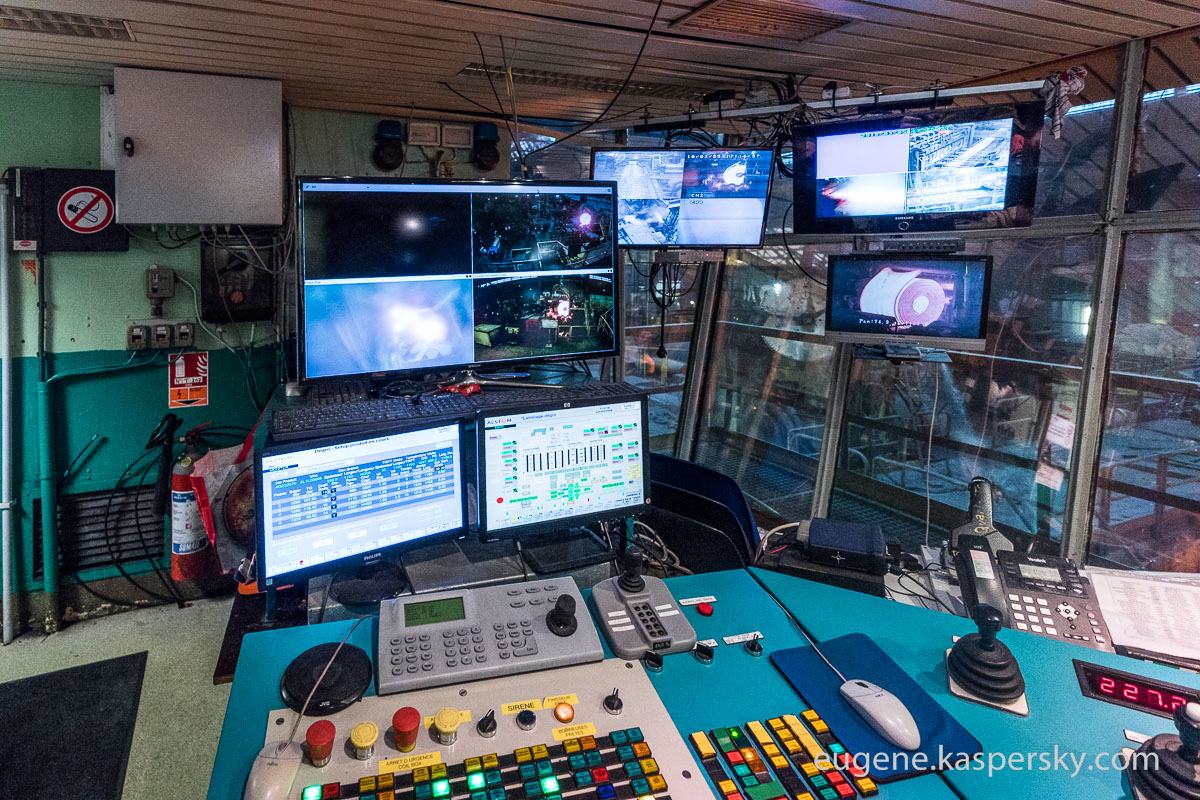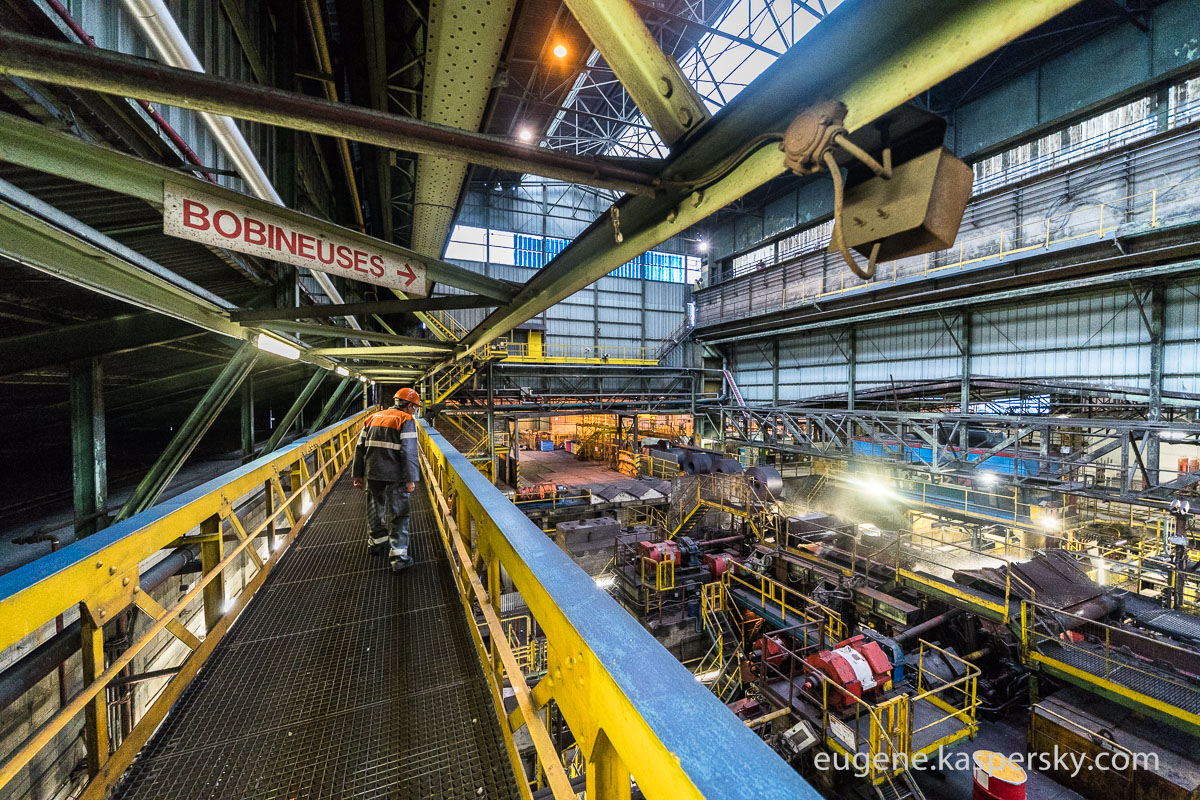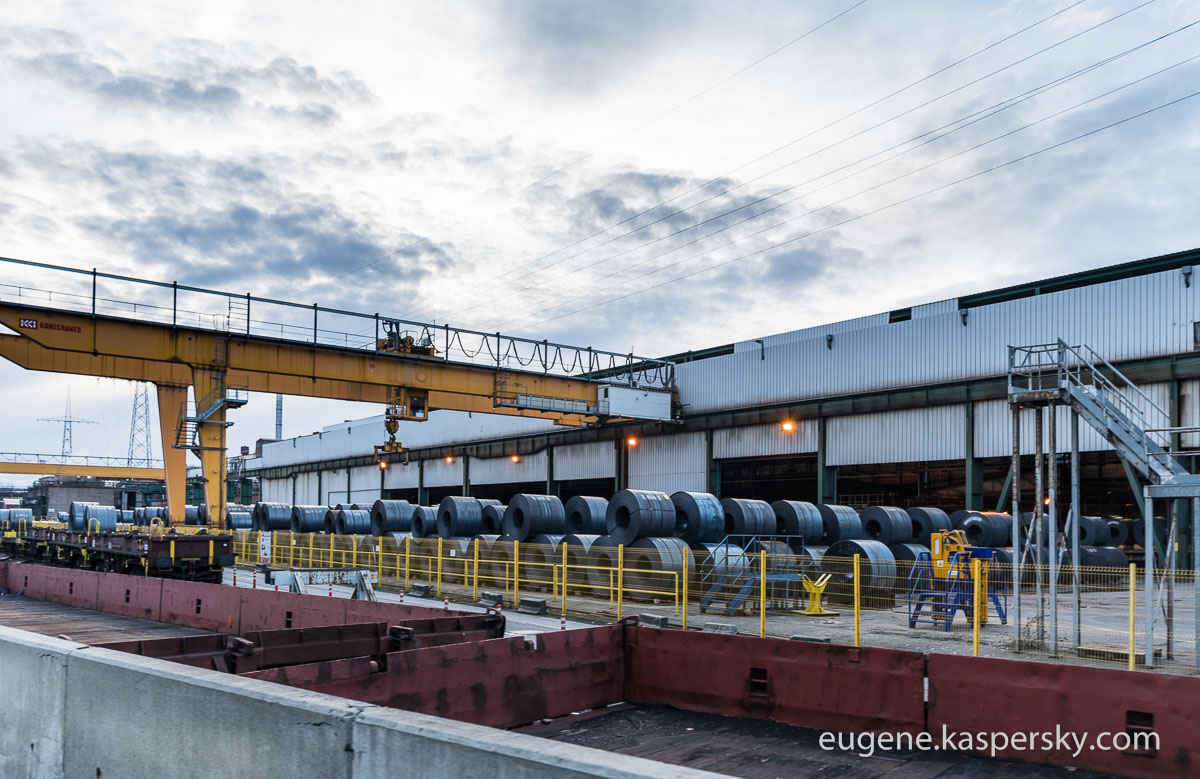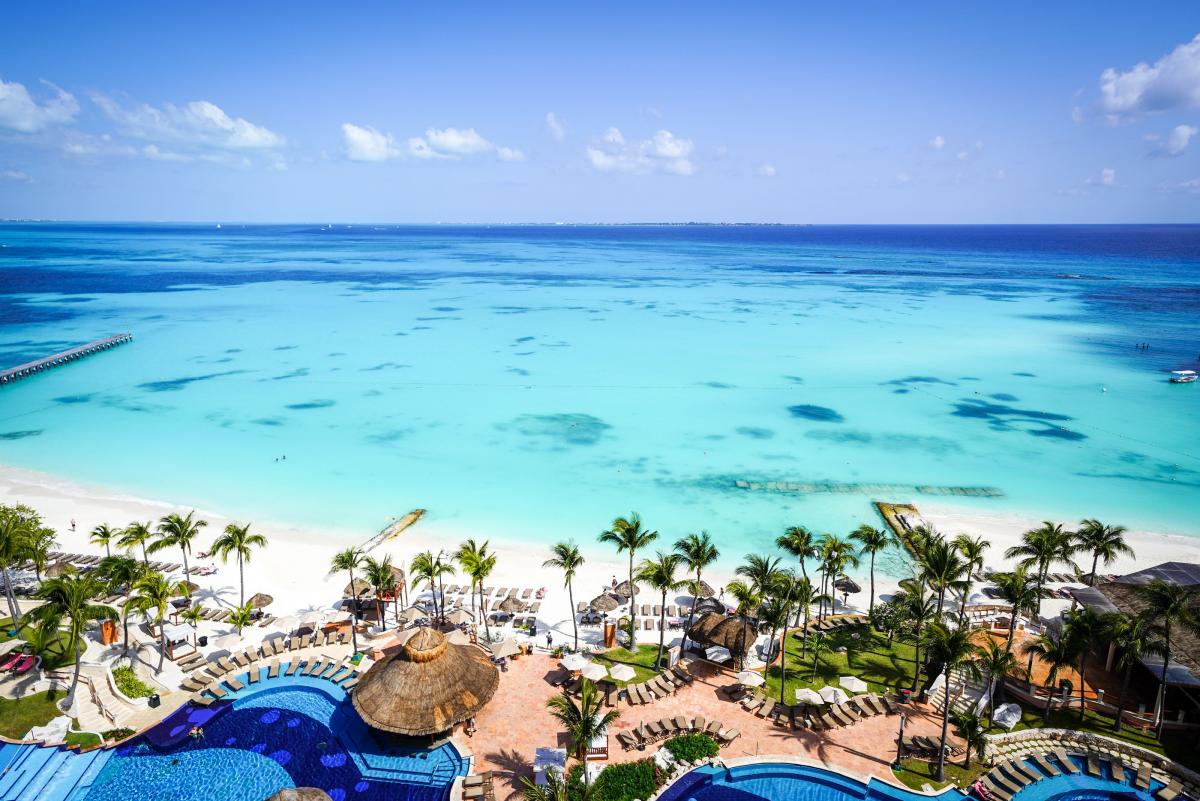March 13, 2018
From Russia (to Belgium) with… Steel.
I’m a curious chap. Example: I’ve long wondered what the differences are between European and Russian… steel works! Ok, not quite everyone else in the world is wondering about such a thing, but, then, you don’t follow this blog for more on what everyone else is thinking, right? ).
So wonder I did. Past tense. Today – no more wondering, for now I know…
So… – those differences between Russian and Euro steel plants. Actually, there aren’t any!
The exterior views of, for example, the NLMK plant in Lipetsk (the Novolipetsk Steel Plant) and the NLMK plant in La Louvière in Belgium can’t be distinguished in any way. Same goes for inside: a long rolling mill running through it, red hot metal slabs sliding along it, hissing water, the most almighty crashes and bangs of tons of metal on metal, and the smells… – ouch: caustically pungently acrid. These plants I’m sure have never been sterile facilities, and they probably never will be; accordingly, visitors taking an excursion of the place are decked out in suitably protective overalls and hardhats. Health and safety regulations are taken very seriously here too.
So, industrial protective clothing duly donned, off we pop on our excursion…
We were first told how the complete metal production run used to be implemented here – from the pouring of cast iron and steel in the blast furnaces to the rolling of both hot and cold steel into sheets. After Russia’s NLMK bought the plant the process was optimized and the steel-casting was stopped. Now the slabs and rolls are shipped in from Lipetsk. Here in Belgium the plant now limits itself to the further rolling of the metal.
Example: this here slab was freighted in from Lipetsk, heated up to 1200℃, and pushed out onto the rolling mill:
And off it shoots down there, where it is pummeled and flattened to eventually become a thin sheet just 2 to 5mm thick:
It goes without saying that there are no workers out there with the red hot slabs. All these heavy metallurgical works are controlled automatically/remotely. So our fave topic – industrial cybersecurity – is literally on the front burner here.
There are several such rooms at the plant, since the slabs are treated with different technological process, and pressed with different rollers and in different regimes. It’s kind of like flattening pastry with a rolling pin, only the scale involved is ever so slightly larger, hotter and noisier.
Somewhere in the middle of the process the sheet is rolled up into a reel, then uncoiled and sent on further – to balance the temperature (the sheets cool unevenly otherwise). That process is repeated later on, only the other way round (the end of the sheet becomes the middle of the reel, and the former middle – the end).
Basically, it’s all just the same as what goes on in any steel plant I’ve visited. Only here everything’s in French:
We got to see some of the rollers (through which the steel sheets are passed through) being changed, as they are periodically:
This procedure is half-automated. But it didn’t pass without hitch: one of the rolling pins didn’t want to be pulled off its base.
At the very end the hot sheet is rolled up into a reel. The length of the sheet at the end depends on how thick it is (all rather elementary, Watson: if it’s twice as thin, it’s twice as long). A 300mm-thick 15-meter-long slab gets turned into a 900-meter sheet 5mm thick.
Next up the reels get loaded into the cold-rolled-milled products’ workshop. Alas, we didn’t have time for an inspection thereof.
So there we have it. When a Belgian needs some steel sheeting for repairs to the roof of his summer house, first of all coal is mined over in far-away Russia, which is then turned into coke and agglomerate by some industrial sorcery, which is then poured into a huge white-hot furnace, out of which is squeezed out some iron, which is taken to a steel foundry, where it has scrap iron added to it and is pressed in various ways, then cooled into a slab, which is loaded onto a rolling mill, which is squeezed and pressed again by different ‘rolling pins’, and rolled up into a reel. Only then is that reel shipped to Belgium – first by train, then by ship on the Baltic Sea, then again by train. Then the above-described processes are undertaken in Belgium, and only then can the Belgian get his hands on that metal sheeting he needs from the store the steel plant sells it to. Well, well. Who’d have known?
Here are the reels from Lipetsk:
Some original road markings on the roundabout:
So, why is this steel plant in Belgium? Well, Belgium, along with Britain, were pioneers of industrial steel production. I knew about England, but not Belgium. I’ll have to study Belgium’s story re steel making. For now, if any of you, dear readers, might be able to give the rest of us a synopsis – please do so in the comments!…
Update!
One of our Fan Club kindly gave us this synopsis:
Belgium became a state rather late for Europe – thanks to England. For furthering its interests on the continent the British helped develop the country’s monarchy. As part of that, the British gave the Congo to Belgium’s then-king Leopold (Queen Victoria’s uncle). This new Belgian colony was 77 times larger than Belgium itself, with three times more population. It was this huge colony that became the main source of Belgium’s raw materials and mineral resources. The Belgian economy flourished as a consequence.
Also, thanks to its coalmines and iron and zinc deposits, the iron and steel making industry in the southern Belgian region of Wallonia thrived. This, together with the production of rubber, became the locomotive of the young state. Thanks to its good ties with England, its rich natural resources in Congo, and a rapid rise in capital, Belgium became the most industrially developed state in continental Europe around the turn of the (19th-20th) century.
Meanwhile in Belgium, the weather was clement:
Meanwhile in Mexico, the weather was oh-my-gorgeous!














